Names are interesting to me. They are important, necessary, elemental. But intriguing, whether universally used or only in one house.
What She Names Things
My wife names things. Like her truck: Strider. Or a favorite houseplant (some kind of fern): Esmeralda.
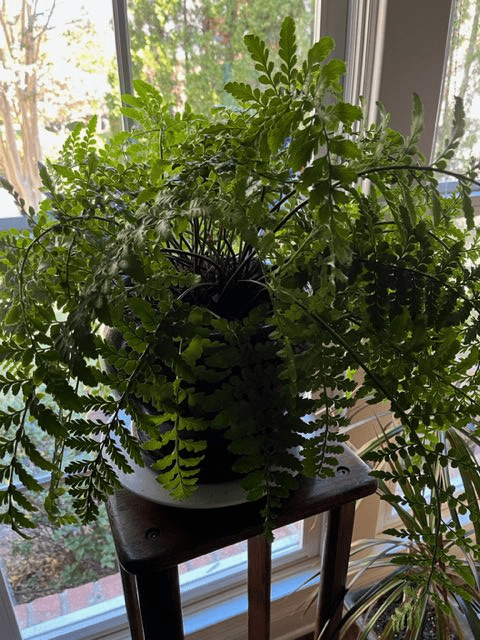
This is Esmeralda.
She also names the bowls and Santas. The latest Santa looked to her like a family friend from her childhood so she called him Oliver. I usually do not attach the names to the Santas officially. But I have included names on bowls in the Etsy shop. One review on a bowl she had named Purity commended not only the bowl but also the name. Other bowls have had names like Antiquity, Wabi Sabi, Fabled, Canyon Rim, and Low Tide. (Hey, she can name them whatever she wants.)
What I Call Things
I just use the names things have already been given. Take for example wood planes. There are jack planes, and plough planes, and block planes. And maybe a thousand particular others. Each has a specific use in, say, carpentry or joinery or furniture making.
But they all have in common a sharp blade housed in a wood or metal frame called the body. The body controls the angle and depth of the blade. I have only to push the plane along the wood.
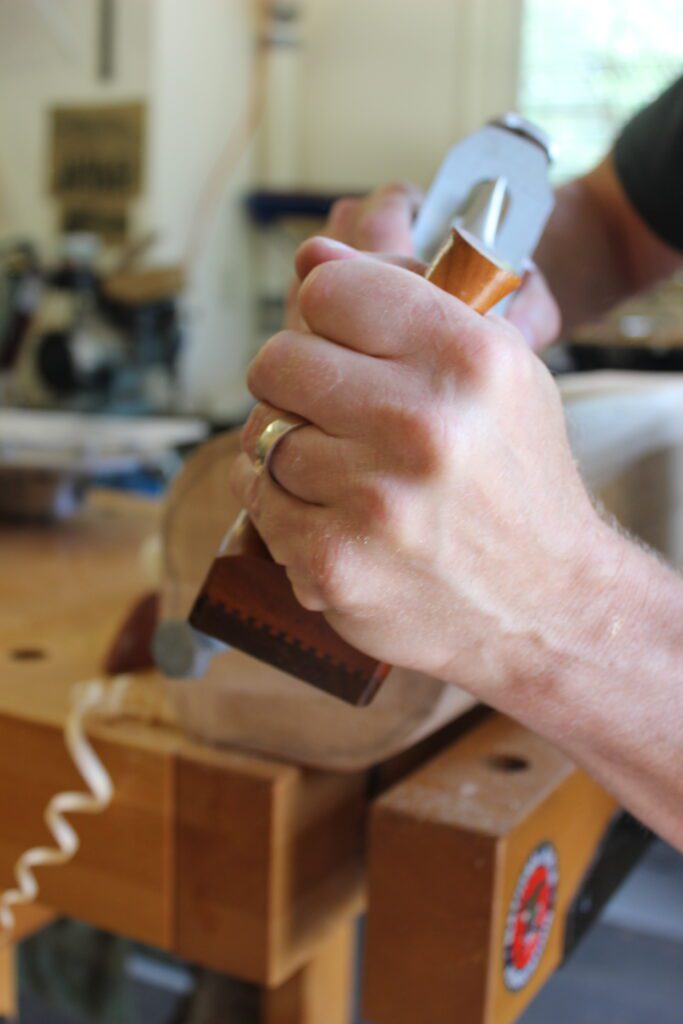
Some tools I use are related to planes. The chisels and gouges, for example, are the sharp-edged tools for carving. Instead of a plane body controlling the edge doing the shaving, my eye and hand and, well, my whole body do. I become the plane body, as it were.
A piece of wood that has been carefully tooled with a keen edge will not need sanding. It will have a smoothly faceted surface that catches the light. It can be stained and polished or left as it is. That is if the tool was kept well honed.
Some of the gouges I use are called veiners and parting tools. Veiners make deep grooves. Parting tools, just as the name implies, separate the background from the image being carved. Fishtail gouges (looking very like a trout’s tail) have sharp corners which allow detailed work in tight places.
All the gouges have more uses than these I mentioned. But their names highlight their primary functions or appearance.
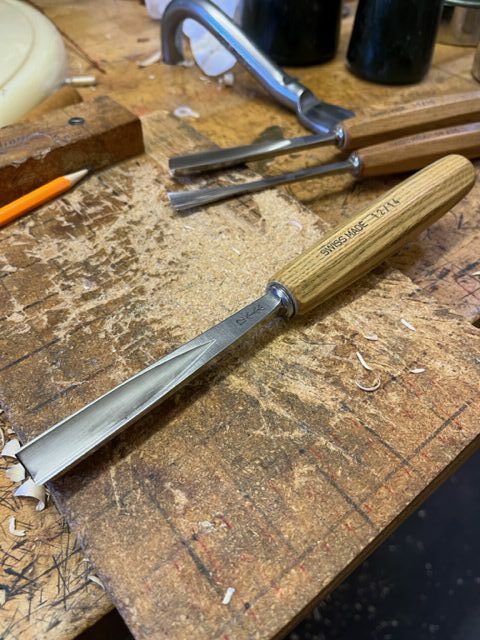
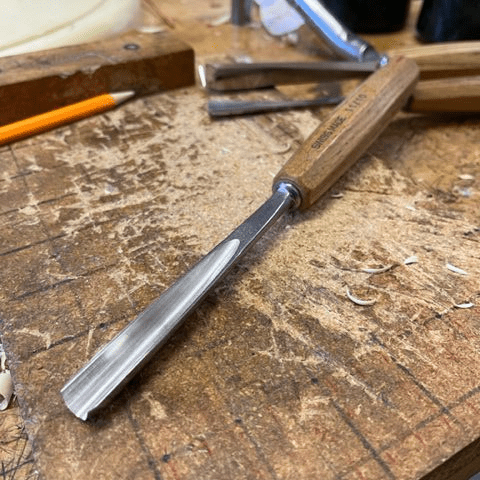
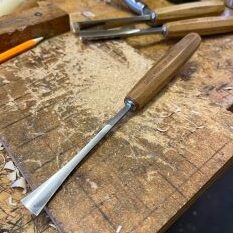
One thing I named
I named my studio The Linden Wood Studio because I carve mainly in linden wood (in America it is called basswood). The Renaissance masters preferred this wood. It yields accommodatingly to the gouges, allowing fine details. The name linden comes from old roots (no pun intended) meaning “flexible or yielding.”
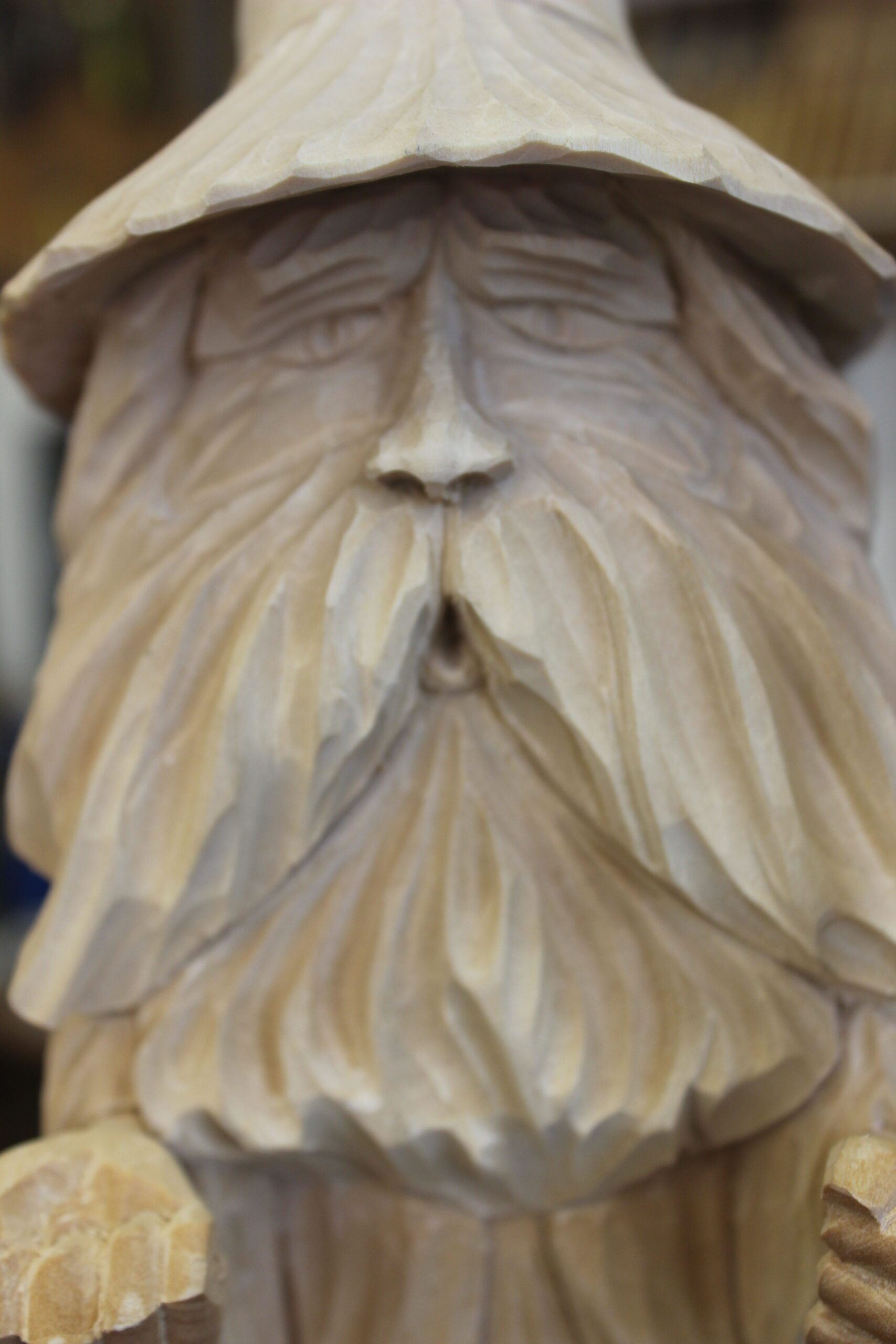
Here is a piece of linden wood I was working on. Any thoughts on what this fellow’s name might be?
Care to know more about the linden tree? Check out https://nimvo.com/everything-you-need-to-know-about-the-linden-tree/

